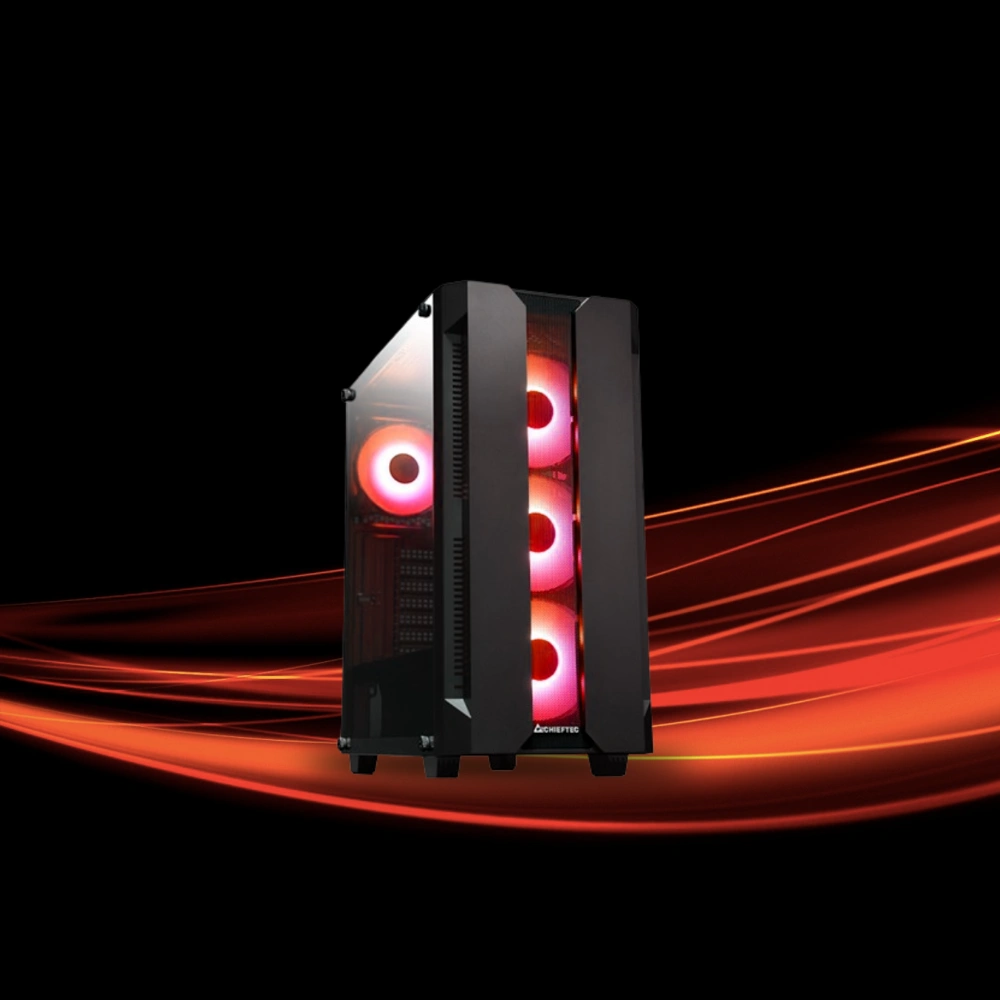The Name
The name is the first thing you should pay attention to when choosing a graphics card. It contains key information about the card, such as its purpose, power, and supported technologies.
GPU Manufacturer
The name of every graphics card starts with the manufacturer of the graphics processing unit (GPU). The main GPU developers are NVIDIA and AMD. Intel also manufactures GPUs, mainly for server solutions, but they released desktop GPUs under the “ARC” brand in 2022, which haven’t been competitive against NVIDIA and AMD’s offerings.
Family
The second part of the name indicates the card’s family, revealing its intended use. For example, NVIDIA’s “TITAN” series is used for developing neural networks, while AMD’s “Radeon PRO” family is for professional tasks like 8K video editing and animation creation.
For gamers and users not working with complex graphics tasks, NVIDIA’s “GeForce” and AMD’s “Radeon” families are suitable. We will focus on these for further discussion.
Letter Index
Following the family name, the letter index gives an idea of the card’s approximate power and technology support. NVIDIA cards use three letter indices:
GT: Low performance, lacking the latest technologies, suitable only for displaying images on a monitor.
GTX: Sufficient for older games and simple graphic tasks (photo editing, Full HD video editing, basic 2D modeling).
RTX: Equipped with all modern features, more CUDA cores, ray tracing, and DLSS anti-aliasing. Suitable for contemporary gaming and professional graphic work.
AMD cards use two letter indices:
R: Low performance, mainly for displaying images on a monitor.
RX: Gaming series with the latest technologies, suitable for modern games and graphic work.
Generation Number
New generations of graphics cards are released approximately every two years. The newer the generation, the higher the performance. For instance, the NVIDIA GeForce RTX 4080, released in 2022, is 51% more powerful than the GeForce RTX 3080 from 2020.
For NVIDIA cards, the generation number is indicated by the first two digits in the name. In AMD cards, the generation is indicated by the first digit. For example, in AMD Radeon RX 6700XT, the generation number is 6.
Series and Suffix
The series and suffix at the end of the name reveal the specific performance of the graphics card. For NVIDIA, the series is denoted by the last two digits, while for AMD, it’s the last three digits. For example, in AMD Radeon RX 6600XT, the series number is 600. The higher the series number, the better the performance. For example, the GeForce RTX 4090 is 30% more powerful than the GeForce RTX 4080.
The suffix indicates an “enhanced version” of the device. NVIDIA cards use the suffix “Ti” and AMD cards use “XT”. For instance, the AMD Radeon RX 6800XT is 10% more powerful than the regular Radeon RX 6800.
Practical Example of Name Analysis
Let’s summarize with an example: NVIDIA GeForce RTX 4090. The name tells us:
NVIDIA: The GPU is from the “green” team.
GeForce: Intended for gaming and graphic work.
RTX: Supports all the latest features.
40: Latest generation, released in 2022.
90: The most powerful card in the current generation.
NVIDIA’s “90” series is the maximum, similar to AMD’s “950” series, like the Radeon RX 6950XT.
Choosing Between NVIDIA and AMD
Decide the purpose of your graphics card. If you need it for graphic work (video editing, design, photo editing, 3D modeling, etc.), NVIDIA is the clear choice due to their stable performance and CUDA cores.
Stability
NVIDIA cards are known for their stable performance without errors like lags, freezes, or crashes. Conversely, AMD cards often experience these issues, although each new driver release improves the situation.
CUDA Cores
CUDA cores are a parallel computing technology that enhances GPU performance in both gaming and professional tasks. Many programs integrate closely with CUDA technology, such as Adobe Premiere Pro’s GPU acceleration using the Adobe Mercury Playback Engine (CUDA).
Gaming
For gaming, decide if you want to play with ray tracing (DXR). If not, AMD cards might be a better choice. For instance, in many games, the Radeon RX 6600XT outperforms the GeForce RTX 3060 by 10%. However, for top-tier cards, NVIDIA takes the lead with their 80 and 90 series outperforming AMD’s 800, 900, and 950 series.
If you plan to use ray tracing, go with NVIDIA. Their RT cores are more efficient for DXR technology. For example, enabling ray tracing in Cyberpunk 2077 on a GeForce RTX 3060 drops FPS by 40%, while on a Radeon RX 6600XT, it drops by 110%.
E-post: [email protected]
Mustamäe / Kristiine esindus: Madara 33, Tallinn 10613
E-R 10:00 – 18:00, L: 11-16
Lasnamäe esindus: Mahtra 1, Tallinn 13811
E-R 10:00 – 18:00, L: 11-16


©2021 MANGUARVUTID.EE / Mänguarvutid ·


Marius, ( Oisu ) ostis viimati Gaming PC Alpha 1.1
